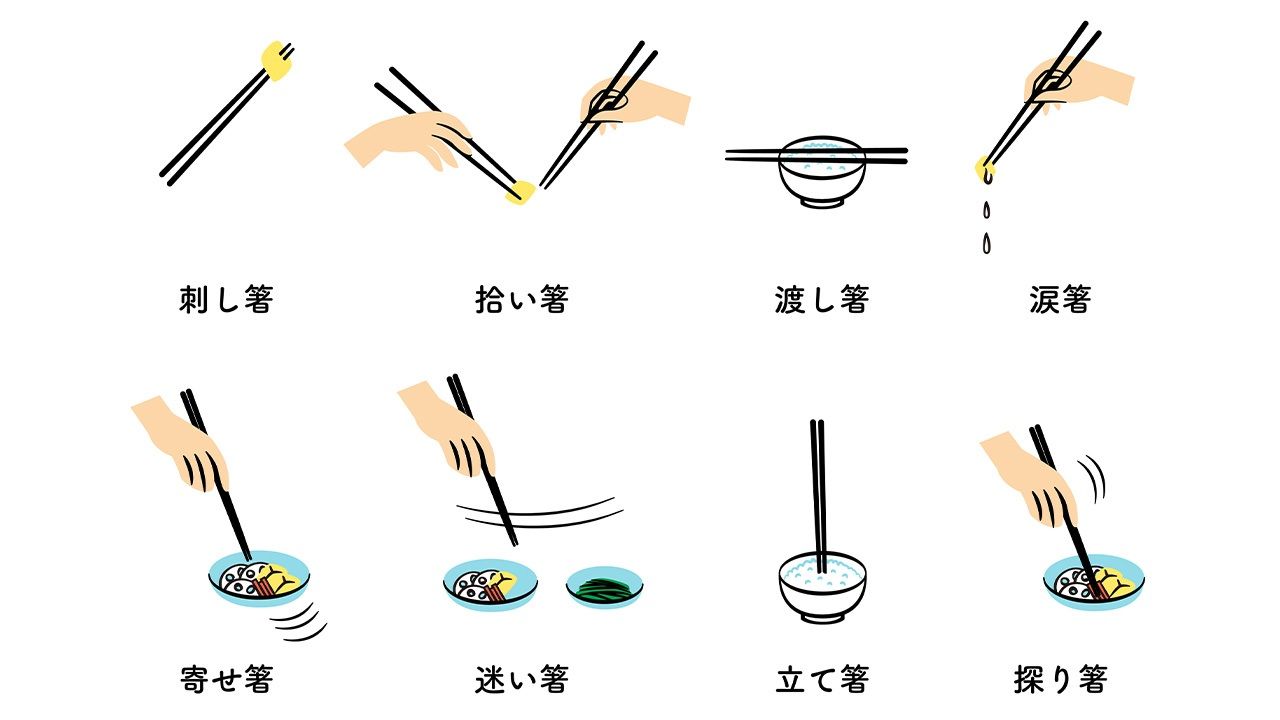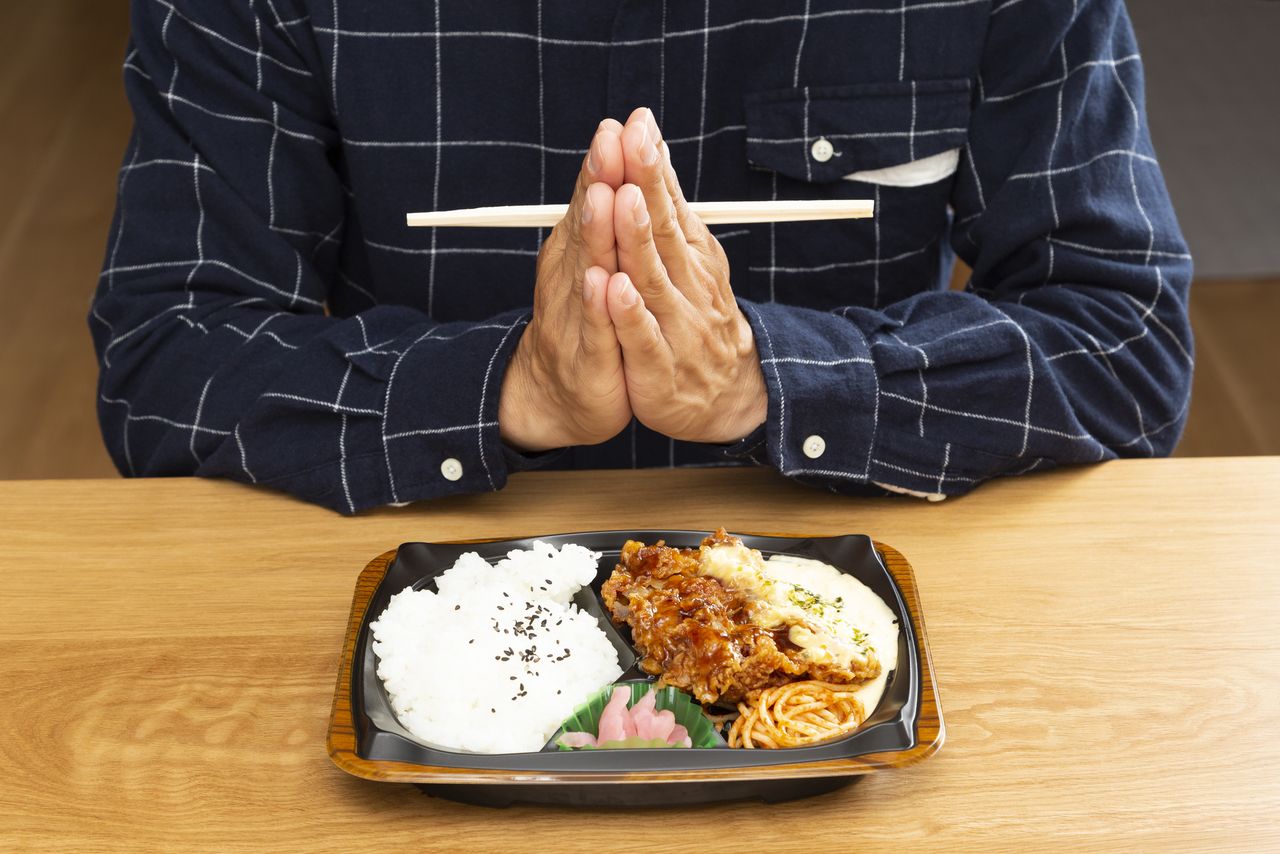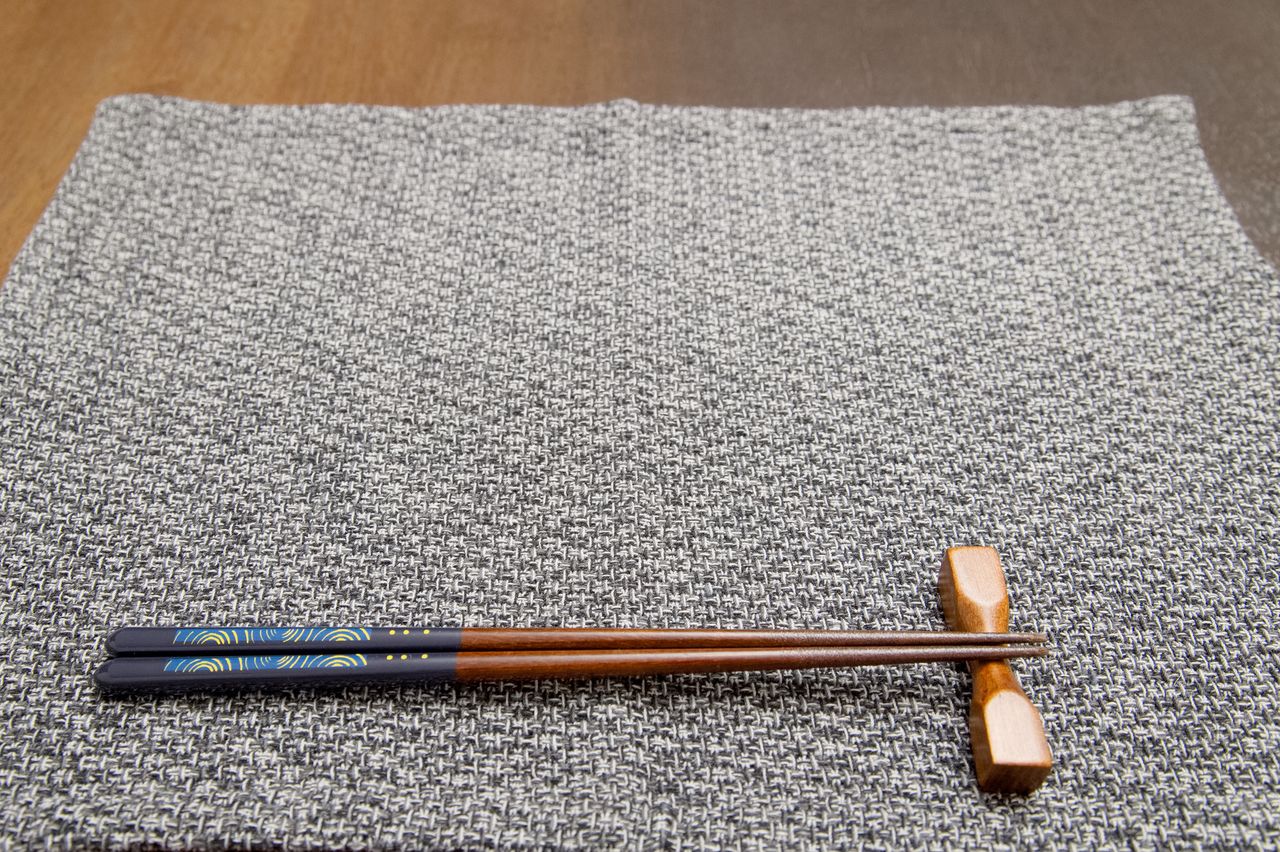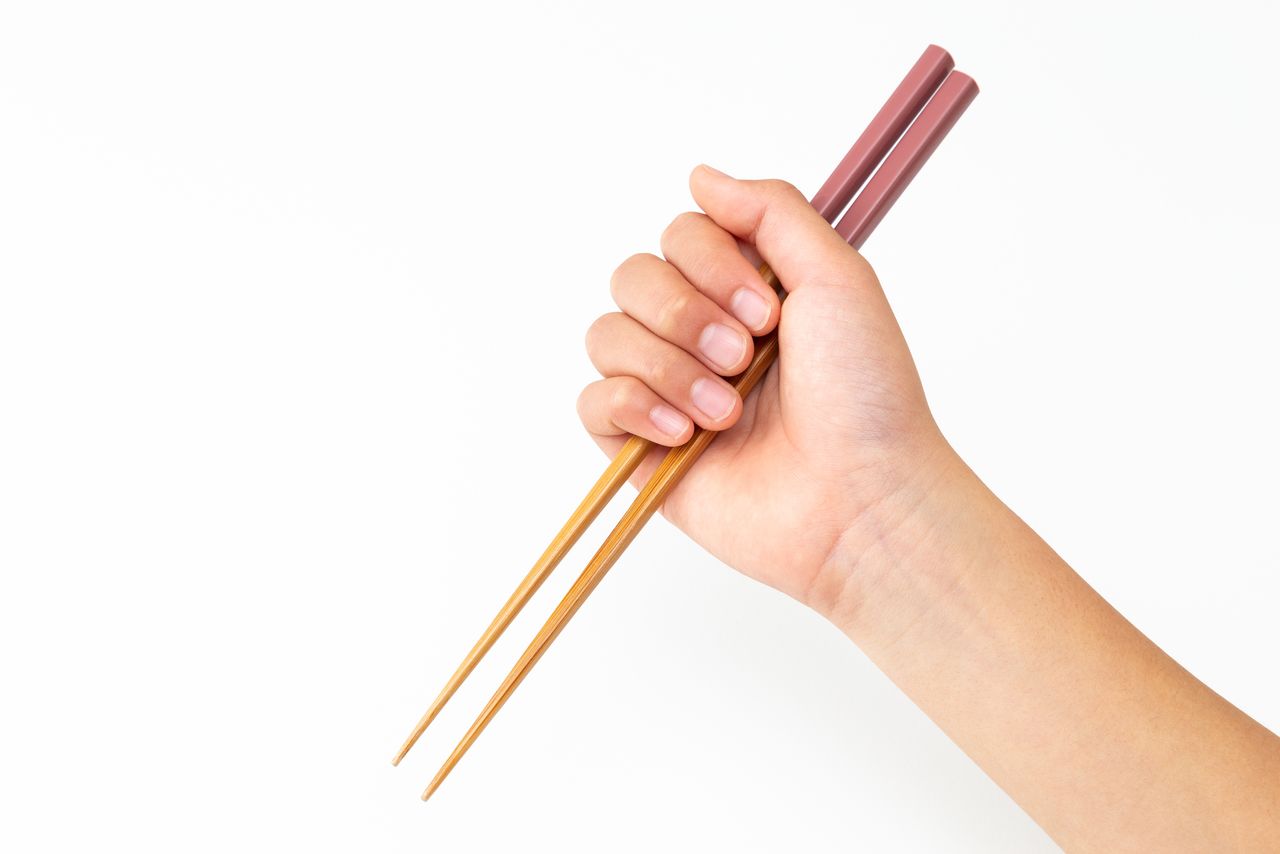
A Japanese Glossary of Chopsticks Faux Pas
Culture Food and Drink- English
- 日本語
- 简体字
- 繁體字
- Français
- Español
- العربية
- Русский
From bad manners to taboo, there are certain ways of using chopsticks that are considered as going against dining etiquette. These various acts, known as kiraibashi, are listed below.
(Listed in Japanese syllabary order)
🥢 あげ箸 Agebashi
To raise the chopsticks above the height of one’s mouth.
🥢 洗い箸 Araibashi
To clean the chopsticks in soup or beverages.
🥢 合わせ箸 Awasebashi (also known as 拾い箸 hiroibashi or 箸渡し hashiwatashi)
!!! (Serious) To pass food from one pair of chopsticks to another. This is taboo due to the custom after a cremation service of picking up remains and passing them between chopsticks.
🥢 受け箸 Ukebashi
To hold out one’s bowl for more while still holding chopsticks.
🥢 移り箸 Utsuribashi (also known as 渡り箸 wataribashi)
To keep putting the chopsticks into the same side dishes. It is proper etiquette to first eat rice, move on to eat from a side dish, eat rice again, and then eat from a different side dish.
🥢 うら箸 Urabashi (also known asそら箸 sorabashi)
To pick up food with the chopsticks and then put it back without taking it.
🥢 拝み箸 Ogamibashi
To hold the chopsticks between both hands when expressing thanks for the food. It is considered rude to hold objects in your hands when in prayer and it is taboo to hold the chopsticks while saying Itadakimasu, a phrase said before eating, giving thanks for the life of the food.
🥢 押し込み箸 Oshikomibashi (also known as 込み箸 komibashi)
To use the chopsticks to push food deep inside one’s mouth.
🥢 落とし箸 Otoshibashi
To drop the chopsticks while eating.
🥢 返し箸 Kaeshibashi (also known as 逆さ箸 sakasabashi)
To turn the chopsticks around when serving food so that the tips of the chopsticks that have touched one’s mouth do not touch the food.
🥢 かき箸 Kakibashi (also known as かき込み箸 kakikomibashi)
To place one’s mouth against the side of a dish and push food in with the chopsticks. This can also mean to use the chopsticks to scratch one’s head or other parts of the body.
🥢 かみ箸 Kamibashi
To bite the chopsticks.
🥢 くわえ箸 Kuwaebashi
To take the tips of the chopsticks in one’s mouth.
🥢 こじ箸 Kojibashi (also known as ほじり箸 hojiribashi)
To use the chopsticks to pick something out from near the bottom of the dish.
🥢 こすり箸 Kosuribashi
To rub waribashi (disposable chopsticks) together to remove splinters.
🥢 探り箸 Saguribashi
To use the chopsticks to stir the food around to find something.
🥢 刺し箸 Sashibashi (also known as 突き箸 tsukibashi)
To use the chopsticks to stab food and skewer it.
🥢 指し箸 Sashibashi
To point at people and things using chopsticks.
🥢 じか箸 Jikabashi
To use one’s own chopsticks instead of serving chopsticks to take food from a large serving dish.
🥢 透かし箸 Sukashibashi
After eating the top half of a fish, to use the chopsticks to keep eating by poking between the bones instead of removing them.
🥢 せせり箸 Seseribashi
To use the chopsticks to keep poking food around.
🥢 そろえ箸 Soroebashi
To hold chopsticks together and tap them on a dish or the top of the table to align the tips.
🥢 たたき箸 Tatakibashi
To make a noise by tapping chopsticks on a dish.
🥢 立て箸 Tatebashi (also known as 突き立て箸 tsukitatebashi, 仏箸 hotokebashi)
!!! (Serious) To stand chopsticks upright in a bowl of rice. This is taboo, as it is the way rice is presented as a Buddhist funeral offering.
🥢 違い箸 Chigaibashi
To use chopsticks that are made of different materials (for example, one made from wood and the other made from bamboo).
🥢 ちぎり箸 Chigiribashi
To hold one chopstick in each hand and use them like a knife and fork to tear or cut food into smaller pieces.
🥢 調伏箸 Chōbukubashi
To place the chopsticks on the table with the tips pointing to the right.
🥢 涙箸 Namidabashi
To allow sauce or soup to drip from the tips of the chopsticks when eating. Namida means “tears.”
🥢 握り箸 Nigiribashi
To grip both chopsticks in a fist.
🥢 ねぶり箸 Neburibashi
To lick the chopsticks.
🥢 橋箸 Hashibashi (also known as渡し箸 watashibashi)
To place the chopsticks like a bridge across the top of a dish to show one is finished. Chopsticks should be placed on the hashioki (chopstick rest).
🥢 はね箸 Hanebashi
To use chopsticks to push aside food that one does not want to eat.
🥢 振り上げ箸 Furiagebashi
To raise the tips of the chopsticks higher than the back of one’s hand.
🥢 振り箸 Furibashi
To shake off soup, sauce, or small bits of food from the tips of the chopsticks.
🥢 惑い箸 Madoibashi (also known as 迷い箸 mayoibashi)
To keep one’s chopsticks hovering over the dishes, unable to decide which food to eat.
🥢 回し箸 Mawashibashi
To stir soup with the chopsticks.
🥢 もぎくわえ Mogikuwae
To put chopsticks sideways in one’s mouth instead of placing them on the table when moving a dish.
🥢 もぎ箸 Mogibashi
To bite off and eat grains of rice that are stuck to the chopsticks.
🥢 持ち箸 Mochibashi
To hold both chopsticks and a dish in one hand at the same time.
🥢 楊枝箸 Yōjibashi
To use a chopstick like a toothpick.
🥢 横箸 Yokobashi
To line the chopsticks up together and use them like a spoon to scoop up food.
🥢 寄せ箸 Yosebashi
To pull a dish toward oneself using chopsticks.
(Originally published in Japanese. Banner photo © Pixta.)


